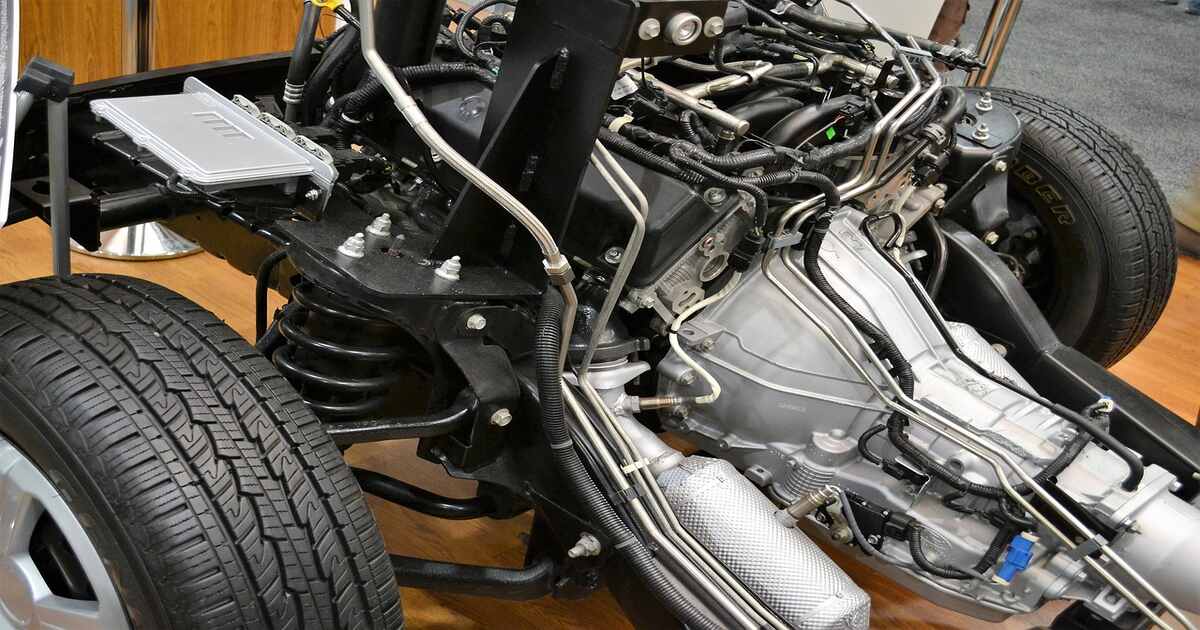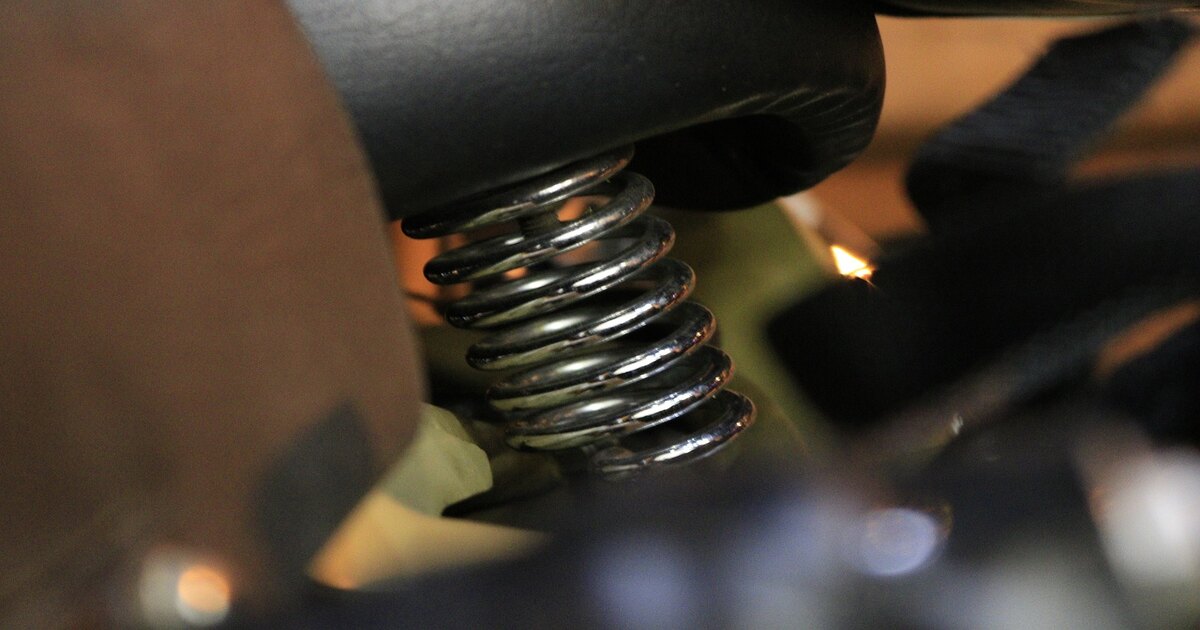- Exhaust
- Suspension
- Performance
- Towing
- Filters
- Truck
- Sale
The Difference Between Passive and Active Suspension Systems
Date Posted: 22 February 2024

Whether you're navigating city streets or conquering rugged terrain, understanding suspension systems is essential for unlocking the full potential of your vehicle. From absorbing shocks to maintaining tyre contact with the road, suspension systems play a crucial role in delivering a comfortable and safe driving experience. But not all suspension systems are created equal.
In this comprehensive guide, we'll explore the differences between passive and active suspension systems, their advantages and disadvantages, and how to choose the right one for your driving needs. However, we should start at the beginning.
Understanding Suspension Systems
Vehicle suspension systems are integral to the overall performance and safety of your vehicle. These systems are essential for providing a smooth and controlled ride while ensuring stability and control by absorbing shocks from bumps, potholes, and uneven road surfaces and minimising vibrations and shocks transmitted to the vehicle's body.
Additionally, suspension systems maintain tyre contact with the road surface, maximizing traction, handling, and vehicle stability during dynamic maneuvers or rough terrain driving. Plus, they support the vehicle's weight, ensuring proper weight distribution and load-bearing capacity to maintain balance and prevent excessive body roll or bottoming out.
Different Suspension Types: Passive and Active

When it comes to the types of suspension systems, there are two primary ones:
- Passive Suspension Systems: Traditional passive suspension systems utilise mechanical components such as coil springs, leaf springs, and shock absorbers (dampers) to provide ride comfort and stability.
- Active Suspension Systems: Active suspension systems incorporate electronic sensors, actuators, and control algorithms to continuously monitor and adjust various parameters, including damping levels, ride height, and stiffness.
These are the basics of active and passive systems, but let’s dig a little deeper.
Passive Suspension Systems
Passive suspension systems, the conventional choice in most vehicles, operate using mechanical components such as springs, dampers, and bushings. These systems aim to strike a balance between ride comfort and handling by absorbing shocks and vibrations from the road surface.
The springs, whether coil or leaf, support the vehicle's weight and absorb vertical movements caused by road irregularities. Meanwhile, dampers, also known as shock absorbers, regulate the rate at which the suspension compresses and rebounds, influencing both ride comfort and stability.
Additionally, bushings connect suspension components to the vehicle's frame or axle, reducing noise, vibration, and harshness levels while facilitating controlled movement. When encountering bumps, potholes, or uneven surfaces, the springs compress to absorb the energy, and the dampers dampen the resulting oscillations.
However, since passive systems lack electronic sensors or control mechanisms to adjust damping levels in real time, their response to road conditions always remains consistent, regardless of where or how you are driving.
Active Suspension Systems
Then, what is an active suspension system? Active suspension technology takes things a step further from passive systems - instead of just reacting to bumps, it actively adjusts to make your ride smoother and more comfortable. These systems use electronic sensors, special fluid-filled shock absorbers, and computer-controlled actuators.
These sensors constantly monitor the road surface and your driving, sending information to the computer. The computer then adjusts the shock absorbers in real time to counteract any bumps or dips in the road. The shock absorbers contain a special fluid that can change its viscosity depending on the electric current passed through it.
This allows for precise control over the damping characteristics, providing a smoother ride. In other words, when you drive over a bump or a pothole, the sensors detect the change in the road surface, and the computer tells the actuators to adjust the shock absorbers accordingly. For instance, if there's a big bump, the shock absorbers become stiffer to absorb the impact better.
The system can even adjust the suspension to keep the car level and stable if you're going around a tight corner. In practice, active suspension systems are like having a smart assistant constantly fine-tuning your car's ride to make it as smooth and comfortable as possible. They're especially great for luxury cars or high-performance vehicles where comfort and handling are top priorities.
The Key Differences Between Passive and Active Suspensions
So, to summarize, the key differences are:
Control Mechanism
- Passive: Relies on mechanical components such as springs and dampers for damping without real-time adjustments.
- Active: Utilizes electronic sensors, actuators, and control algorithms to continuously monitor and adjust damping levels in real time.
Adjustability and Customisation
- Passive: Offers limited adjustability and customisation options, with damping levels typically set during manufacturing.
- Active: Provides greater adjustability and customisation options, allowing you to select different driving modes or adjust damping settings to suit preferences or driving conditions.
Ride Comfort and Handling
- Passive: Provides a comfortable ride in many situations but may struggle to maintain optimal handling and stability under varying road conditions.
- Active: Excels in providing both excellent ride comfort and precise handling by continuously adapting to road conditions, offering superior performance in comfort and agility.
Advantages and Disadvantages of Passive Suspension Systems

Now that it’s clear what active and passive suspension systems are and how they work, let’s focus on the pros and cons of each. The advantages of passive systems are:
- Simplicity and Reliability: Passive suspension systems are mechanically straightforward, consisting of fewer components compared to active systems. This simplicity often translates to greater reliability and durability over time.
- Cost-effectiveness and Lower Maintenance: Passive suspension systems are generally more affordable to manufacture and install compared to active systems. Additionally, they typically require less maintenance since they lack complex electronic components that may be prone to failure.
- Suitable for Regular Road Conditions: Passive suspension systems are well-suited for regular, on-road driving conditions where the terrain is relatively predictable and consistent. They provide adequate comfort and handling for everyday driving scenarios without the need for advanced adaptive features.
- Proven Technology: As the traditional suspension system found in most vehicles, passive suspensions have undergone years of refinement and optimization. Their design and operation are well-understood by mechanics and engineers, making them a trusted choice for many vehicle manufacturers.
The disadvantages are:
- Inability to Adapt: Passive suspension systems lack the ability to adapt to varying driving conditions or terrain. They provide a fixed level of damping, which may result in compromised ride comfort and handling performance, especially on rough or uneven roads.
- Potential Compromise in Ride Quality: While passive suspension systems provide acceptable ride comfort in many situations, they may struggle to deliver optimal comfort and stability under challenging road conditions due to their inability to adapt in real-time. The fixed damping characteristics may force you to compromise between ride comfort and handling performance.
- Less Responsive: Passive suspension systems are inherently less responsive than active systems since they rely solely on mechanical components to absorb shocks and vibrations. This lack of real-time adjustment means they cannot instantly adapt to sudden changes in road conditions or driving dynamics.
- Higher Maintenance Requirements: Finally, passive suspension systems may require more frequent maintenance compared to active systems, particularly in older vehicles where components like springs and dampers may degrade over time. Additionally, worn-out components can further lead to decreased ride quality and handling performance if not replaced promptly.
Advantages of Active Suspension Systems
When it comes to active suspension systems, their advantages over passive systems are:
- Improved Ride Quality: Active suspension systems offer superior ride quality compared to passive systems. By continuously adjusting damping levels in real-time, active systems can effectively absorb bumps and vibrations from the road surface, providing a smoother and more comfortable ride for passengers.
- Enhanced Handling and Stability: Active suspension systems excel in enhancing vehicle handling and stability. By dynamically adjusting damping levels and other parameters, these systems can minimise body roll, improve cornering ability, and maintain optimal tyre contact with the road, resulting in precise and predictable handling characteristics.
- Adaptability to Various Road Conditions: Active suspension systems are highly adaptable to different road conditions and driving situations. Electronic sensors continuously monitor road surface changes like bumps, potholes, and corners, allowing the system to adjust damping levels accordingly. This adaptability ensures optimal performance and comfort across a wide range of driving scenarios, from smooth highways to rough terrain.
- Customizable Driving Modes: Active suspension systems often come with selectable driving modes that allow you to tailor the suspension settings to your preferences or driving conditions. This customization feature provides flexibility in adjusting ride characteristics like comfort, sportiness, or off-road capability, enhancing the overall driving experience.
However, they also have some disadvantages. Namely:
- Complexity and Cost: Active suspension systems are typically more complex and expensive to manufacture and maintain compared to passive systems. The inclusion of electronic sensors, actuators, and control algorithms adds to the overall cost of the vehicle and may require specialised training and equipment for maintenance and repairs.
- Potential Reliability Issues: The electronic components in active suspension systems may be prone to failure or malfunction over time, leading to reliability issues. Faulty sensors or actuators can disrupt the system's ability to adjust damping levels accurately, compromising ride quality and handling performance.
- Higher Power Consumption: Active suspension systems require additional electrical power to operate the electronic components continuously. This increased power consumption can have a minor impact on fuel efficiency, particularly in vehicles with limited electrical capacity or hybrid powertrains.
- Maintenance Complexity: Caring for these suspension systems can be more complex than passive systems due to the integration of electronic components. Troubleshooting and diagnosing issues may require specialised diagnostic tools and expertise, leading to longer service times and potentially higher repair costs.
Applications of Passive and Active Suspension Systems
Passive suspension systems are commonly found in a wide range of vehicles, including economy cars, trucks, and SUVs - vehicles that prioritise simplicity and cost-effectiveness, making passive suspensions a practical choice for everyday transportation needs.
Active suspension technology, on the other hand, is often featured in high-end luxury vehicles and performance cars. These vehicles benefit from the advanced capabilities of active systems, such as improved ride quality, enhanced handling, and customisable driving modes. Active suspension systems cater to drivers seeking top-tier comfort and performance in their vehicles.
Performance and luxury car manufacturers frequently integrate active suspension technology into their flagship models to showcase cutting-edge innovation and provide a competitive edge in the market. However, you can typically upgrade your suspension system with performance parts, even if your vehicle doesn’t come with them.
How To Choose the Right Suspension System for Your Needs

When selecting a suspension system for your vehicle, you should consider several factors. First, evaluate the typical driving conditions you encounter, including road surfaces, terrain, and weather conditions. Passive suspension systems may suffice for regular road commuting, while active systems offer superior adaptability for varying driving environments.
The type of vehicle you own or intend to purchase can also influence the choice of suspension system. Luxury cars and performance vehicles often come equipped with active suspension technology to deliver superior comfort and performance. In contrast, economy cars and trucks may feature passive suspensions to prioritise cost-effectiveness and reliability.
Determine your budget for suspension system upgrades or vehicle purchases. Expect higher initial costs if you are looking for an active suspension system. Consider the long-term benefits and trade-offs of each system in relation to your budget constraints and don’t forget to assess the maintenance requirements and potential costs associated with each suspension system.
While passive systems generally require less maintenance and are more straightforward to service, assuming you are getting a relatively new vehicle, active systems may involve periodic calibration, software updates, and potential electronic component replacements.
Where Can You Get Aftermarket Upgrades for Your Suspension System?
We hope that by now you can make an informed choice about the type of suspension system you’d like to get. So all that’s left is to find a reliable parts dealer. That’s where we can help. At Perform-Ex Automotive, we have the aftermarket suspension components you need. Simply place your order online and we will ship it to your address. And if you have questions about specific parts or our policies, feel free to contact us and we’ll gladly answer any question you have.
Leave a comment











